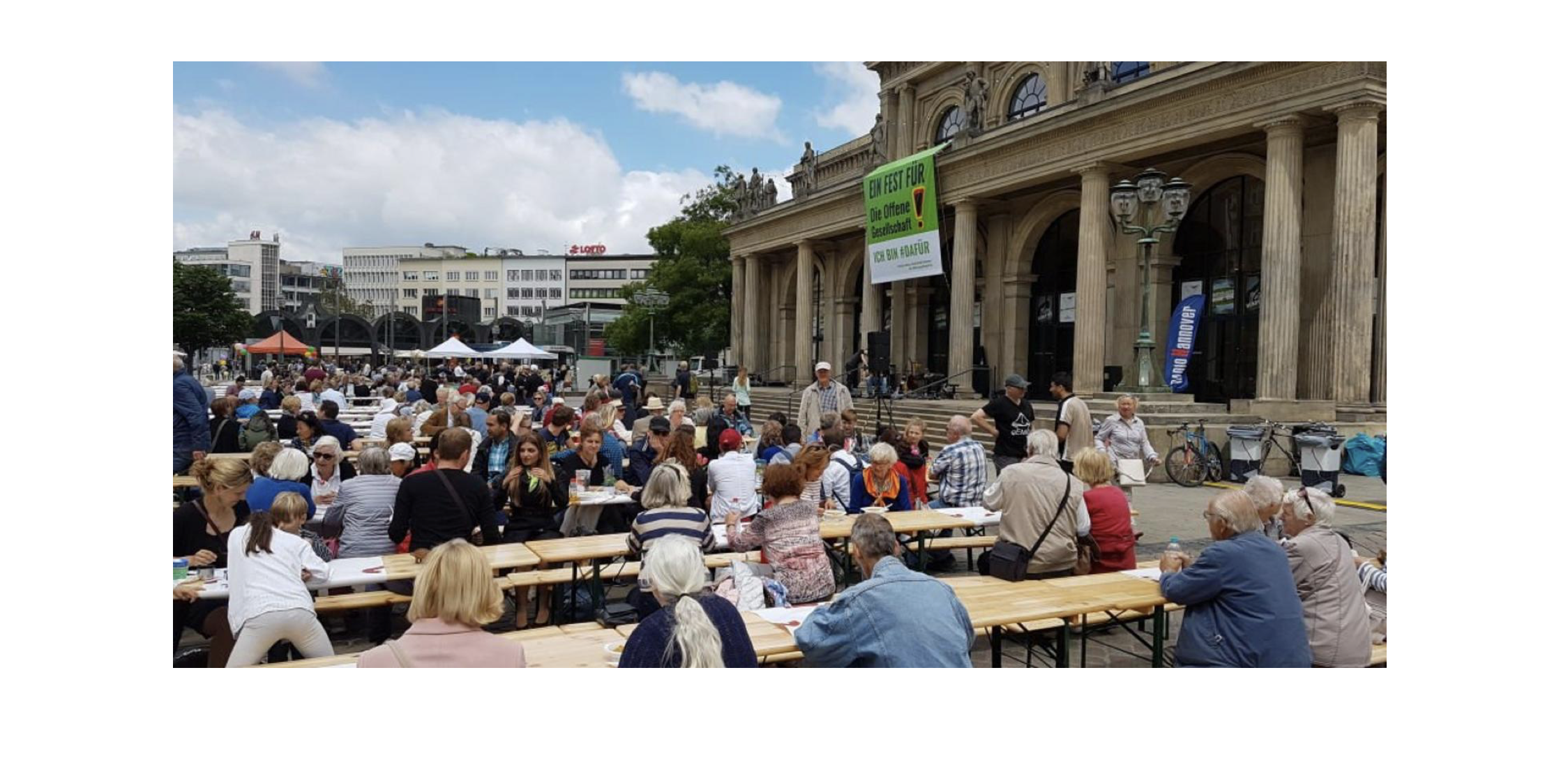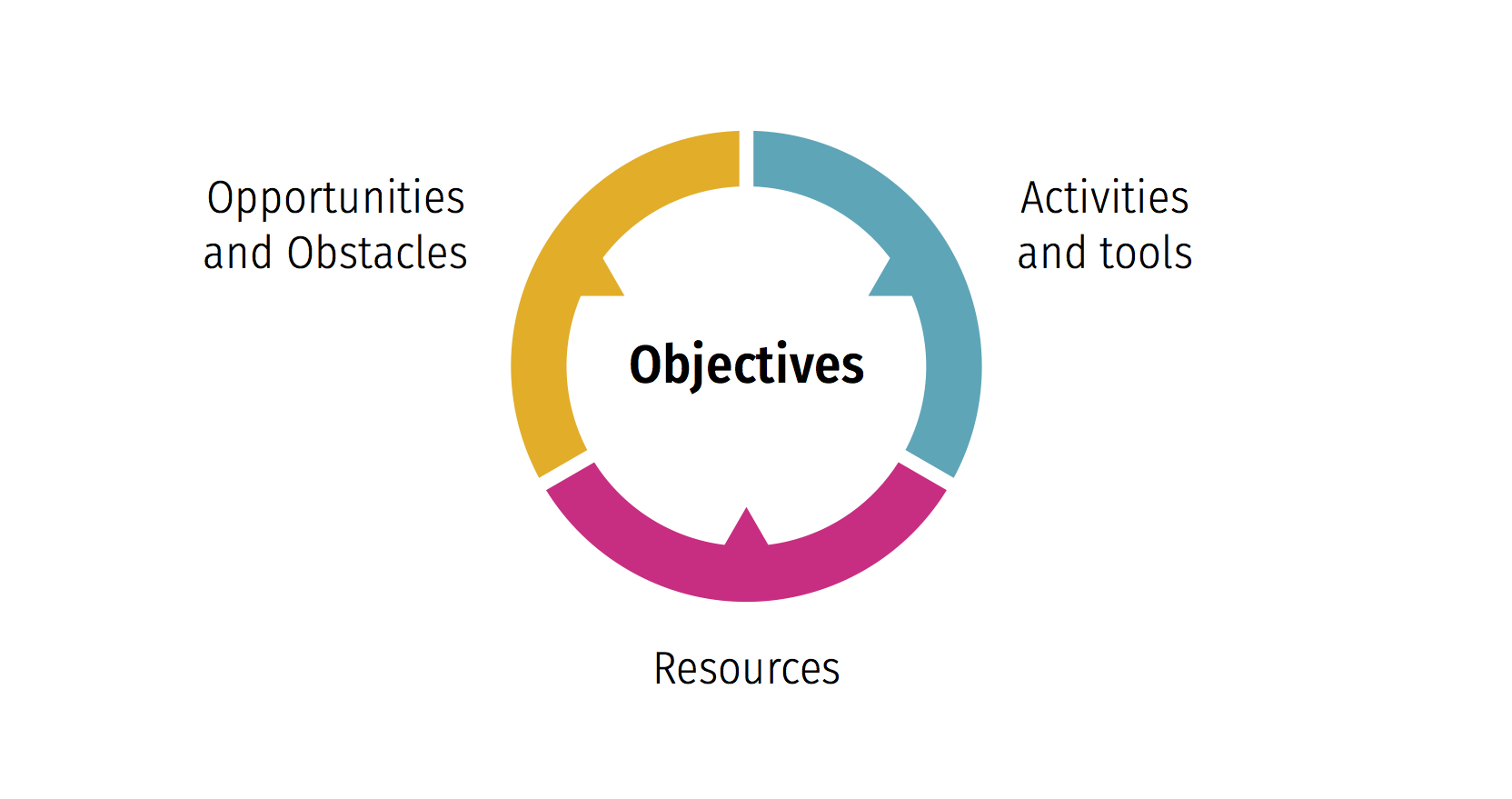2.8 Action plan
The second step of the narrative change campaign planning process – Build out the elements - consists of eight elements that guide you through the development of the campaign tools and approach. On this page, we focus on the eight element – Action plan.
-
Messages
-
Stories
-
Slogans & hashtags
-
Evidence
-
Visuals
-
Messengers & supporters
-
Threshold forum/publication
-
Action plan
While the elements in the table above are presented in a series, the reality of this step is that you need to iterate back and forth among the different tools through the campaign build out process.
The simple truth of effective advocacy interventions is that you need to view the process as dialogue, i.e. a mediated and negotiated discussion that catalyses and sets up a two-way interaction that is designed to convince a target audience and achieve your objectives. It is a mistake to think of advocacy as a one-way process, where for example, you release a video, set up a hashtag, have a launch event and say you’re done. Extensive practice has proven this approach very seldom leads to much influence1
So, this brings us to the discussion of how you are going to start and continue the dialogue you wish to have and what you can actually afford. These practical planning considerations are key to a campaign and we break down what needs to be considered.
Develop a feasible action plan based on mediating an effective dialogue you can afford.
In practical terms, you need to draw up a plan for the needed set of activities and communication tools and consider if they provide enough opportunity to engage the target audiences to be convinced of your position and so, achieve your objectives. However, such planning is not done in an ideal world and most organisations have limited resources they can commit to a campaign. For example, for a campaign based on media engagement, an often-quoted benchmark is the ‘Rule of 7’2
, i.e. the chances of convincing someone are highly increased if they see the message seven times and so, this may be your target in such a campaign approach. Another approach may be to run an event in which you will engage the middle, e.g. Jo Cox Foundation and their Great Get Together in the UK and Offene Gesellschaft in Germany (see photo below), organise communities to sit together and eat and talk about the issues. Or of course, you may combine online and offline approaches. So looking to be most effective, you need to consider the best approach to facilitating and structuring a dialogue to have the best chance of hitting your targets and at the same time, balance the plan with the manpower and money you have available.

It’s also important to factor in potential opportunities and obstacles in political and policy debates that could affect the rollout, e.g. if you can feed a topical election debate you may get way more reach, but it also could be a risk. So, all these elements of the campaign planning process are intrinsically interrelated as we show in the following diagram and you need to consider them together in drawing up a realistic action plan.

Figure 2: Key factors to be considered in campaign action planning
Most campaigners are already good at project planning and budgeting, but what is often missing is this more interrelated and strategic planning that provides a balance for what is feasible and maximises outcomes versus what is affordable. We would recommend you iterate through the set of questions in the planning checklist below to find the sweet spot for your plan.
Step 2.8. Action plan
- What are your campaign objectives?
- How much engagement with your target audiences will it take to reach those aims?
- What kind of communication tools and activities do you need to catalyse and mediate the discussion you want to have to reach those aims?
- What can you afford to produce in terms or manpower and money available?
- Are there opportunities in the debate or events that you can leverage to reach a wider audience with a small amount of resources?
- Are there potential obstacles in the political or policy process that could hinder your campaign goals?
- 1ICPA (2012) Making Research Evidence Matter: A Guide to Policy Advocacy in Transition Countries.
- 2Tutorialspoint (2018) The Rule of Seven.